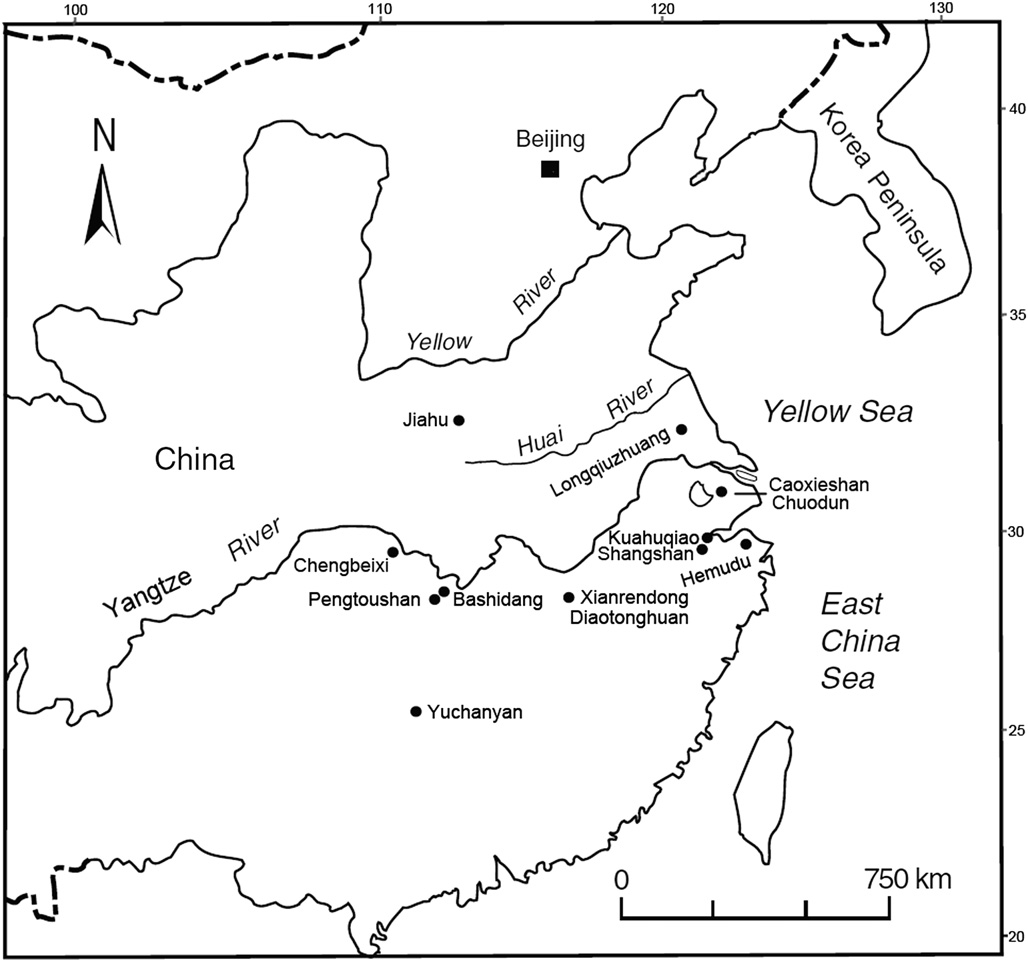
reseach sites
The middle and lower reaches of theYangtze River is a famous location for the investigation of the early history of human civilization. This region has become one of the most important places to trace the origin and developmentof agriculture. Wang Weiming and collegues valuated several important archeological sites in this area using multiple approaches such as 14C dating and phytolith analysis and discussed the major development stages of early rice agriculture under background of climate and environment changes.
They recognized three main development stages of the prehistoric rice farming in China: initial stage (before 8000 BC, approximatelyequal to Mesolithic Age), developing stage (between 8000 BC and 5000 BC) and maturating stage(since 5000 BC). According to the study, they found that the initiation of agriculture come with the establishment of more or less sedentary residences, which coexists with the occurrence of pottery making. They suggest that the warming climate after the lastglaciations and the food requirement and storage are major factors of the initiation of early rice farming. The climate change in Holocene and the increase of the population greatly promoted the development of early rice farming in studied area, Wang et al concluded.
This recent achievement clearly exhibits the transitional process from a huntingand gathering society to an agriculture-oriented society.
The result of this research has be published on Quaternary International (Wang Wei-ming, Ding Jin-Long, Shu Jun-Wu, Chen Wei, 2010. Exploration of early rice farming in China. Quaternary International, 227: 22-28).
Download:
